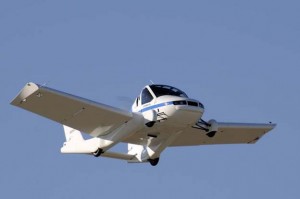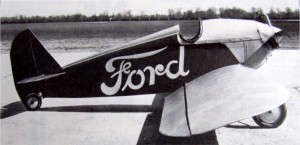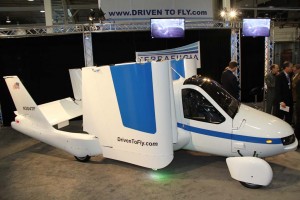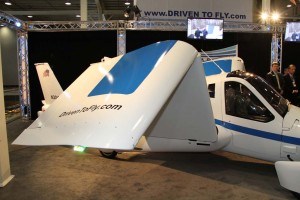It’s been a dream that countless visionaries and entrepreneurs have failed to achieve. But five former graduate students from MIT are about to take wing with the world’s first flying car. Make that the first to pass muster and win the necessary approval of government regulators.
That’s been no easy task for Massachusetts-based Terrafugia which had to deal with a complex mix of occasionally conflicting automotive and aircraft regulations. But their Transition 2-seater, which took its maiden flight two weeks ago, is ready to go into production, with sales set to begin about a year from now.
The company claims it has already taken 100 advance orders – but it’s looking to line up more with a display at the 2012 New York Auto Show, where it is competing for attention alongside more conventional automobiles, like the new Toyota Avalon and the reborn SRT Viper.
“Don’t think of it as a car that flies,” suggested Carl Dietrich, one of the MIT students who is now serving as Terrafugia’s CEO. “Think of it as a plane that drives.”
Just 19 feet long, the Transition can fit into any garage large enough for a full-size SUV – at least once its 27-foot wings are folded away. Then, the flying car is no wider than a big ute, and only about 7 feet tall.
The concept has been under development since 2005 and has undergone a number of changes over the years. The front canard, or mini-wing is now gone. The latest iteration features a pusher-style propeller that shares its 100-horsepower aircraft engine with the rear wheels.
In the air, the Terrafugia Transition is rated to reach a cruising speed of about 100 knots, or 116 mph, and a ceiling of 10,000 feet. It burns about 5 gallon of automotive-grade premium unleaded gas an hour, equal to roughly 23 mpg. On the ground, that jumps to 35 mpg, according to preliminary figures, and the vehicle can “cruise the highway all day long,” said Dietrich, at speeds up to 80 mph.
Meeting regulatory approval was no easy task. Among other things, the Transition now carries a host of safety gear required by the National Highway Traffic Safety Administration, including airbags and a front crumple zone.
But, according to Dietrich, it was a change in the rules by the Federal Aviation Administration that ultimately made the project possible. The FAA created a new category of licensing, called the Sport Pilot, which requires about half the training of a fully-licensed private pilot. That works out to a minimum 20 hours of training, which should translate into something north of $3500 in costs – though company officials acknowledged the typical student will require closer to 28 hours.
The Student Pilot license does have its limitations, notably restricting flying hours to daytime. The Transition can be used at night by someone with a conventional pilot’s license.
Meanwhile, prospective buyers need consider that even a minor fender bender must be handled differently than with a conventional automobile. It would require a full inspection of the carbon fiber aircraft – and repairs, if necessary — by a certified aircraft mechanic, rather than an auto mechanic.
The management team talk as if they’re more interested in promoting flying than selling their new product. “The goal,” said Dietrich, “is to lower the barrier for the general public and get them up in the air.”
He noted that there are more than 5,000 private airports in the U.S., many underutilized. The Transition needs to be operated in the air like a conventional aircraft. But unlike a plane that can be limited in use during bad weather, Terrafugia notes that even if grounded, Transition can just drive to where it was originally planning to go.
Picking up a tip from the automakers displaying their wares nearby, Terrafugia is offering a special deal to NY Auto Show-goers. They can put down a $2,500 deposit, rather than the original $10,000. But the price remains $279,000.
Sales should launch in early 2013 and the company is expecting to sell about 35 of the Transition flying cars annually.




